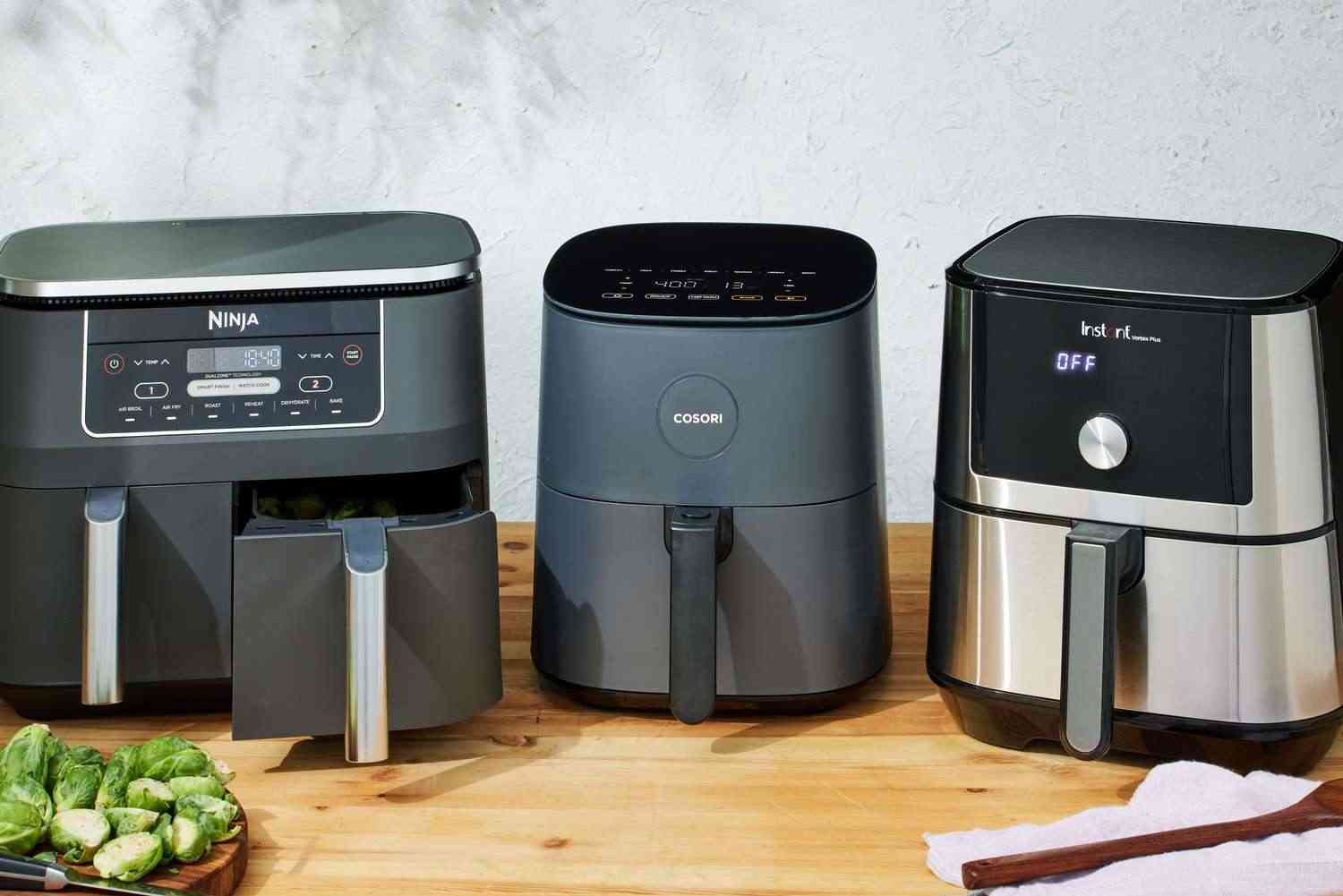Air fryers have become a kitchen sensation in recent years, touted for their ability to create crispy, healthier versions of deep-fried foods with significantly less oil. But with all the hype surrounding this kitchen appliance, it’s important to ask, What is the disadvantage of an air fryer? While air fryers certainly offer numerous benefits, such as convenience and healthier cooking options, they are not without their flaws.
In this article, we will dive into the shocking truths about air fryers, exploring potential downsides that every consumer should consider before making the jump into air fryer ownership. Whether you’re a seasoned air fryer enthusiast or considering purchasing one for the first time, understanding these disadvantages will help you make an informed decision.
Let’s explore the lesser-known side of air fryers and determine whether the cons outweigh the pros.
What Is the Disadvantage of an Air Fryer?
1. Limited Cooking Capacity – Not Ideal for Large Families
When considering an air fryer, one of the primary drawbacks is its limited cooking capacity. While many models advertise being able to cook a decent amount of food, most air fryers are designed with small to medium-sized households in mind. For large families or people who entertain guests frequently, cooking multiple batches can quickly become a chore.
- Example: A typical 5-6 quart air fryer may cook enough food for two to four people, but if you’re preparing meals for a larger group, you’ll find yourself making several rounds of cooking, which can be time-consuming.
- Solution: Look for models with larger baskets or consider investing in an air fryer oven that can handle bigger portions.
2. Uneven Cooking – Can Lead to Inconsistent Results
Air fryers use convection heat to cook food, meaning hot air circulates the food to produce a crispy exterior. While this can result in excellent crispiness, it can also lead to uneven cooking if the food is not placed correctly in the fryer basket. Overcrowding the basket or not shaking the food halfway through the cooking process can result in certain areas being overcooked while others are undercooked.
- Solution: To avoid uneven cooking, ensure that the basket is not overcrowded, and give your food a good shake halfway through the cooking time. This ensures even heat distribution.
3. Long Cooking Times for Some Foods
Although air fryers are marketed as a faster way to cook food compared to traditional ovens, some dishes may still take longer than expected. For example, thick cuts of meat or frozen foods can require longer cooking times, defeating the convenience that air fryers are supposed to offer.
- Example: A thick chicken breast or frozen fries may require up to 25-30 minutes in an air fryer, which is similar to the time it takes in a regular oven.
- Solution: Opt for quicker-cooking foods like vegetables, smaller cuts of meat, or pre-cooked frozen items to make the most of your air fryer’s speed advantage.
4. Plastic Taste and Smell – An Off-Putting Problem
One surprising downside to air fryers is the plastic taste and smell that some users report when first using the appliance. This issue is particularly common with lower-end air fryers or when the fryer is new. The plastic smell can transfer to the food, leaving an unpleasant aftertaste.
- Solution: Before using your air fryer for cooking food, run it empty at a high temperature for about 10-15 minutes to burn off any residual plastic odors. Additionally, check reviews before purchasing to ensure the model you’re considering doesn’t have this issue.
5. High Energy Consumption – Not Always Energy Efficient
While air fryers consume less energy than a conventional oven, they are still electric appliances that require a considerable amount of power, especially for longer cooking sessions. For regular users, this could result in a noticeable increase in their electricity bill.
- Solution: If you’re concerned about energy usage, consider limiting your air fryer use to quick meals or choose an air fryer model with energy-saving features like automatic shut-off or temperature control.
6. Overcooking – It’s Easy to Go Too Far
Because air fryers work by circulating hot air around the food, it’s easy to overcook delicate foods like fish, vegetables, or pastries. Since air fryers don’t have a traditional cooking process, monitoring the food closely is essential. If you’re not careful, you could end up with over-dried, tough food instead of a crispy delight.
- Solution: Use a meat thermometer for meats, and keep an eye on your food as it cooks. Adjust cooking times according to the type of food and its thickness to avoid overcooking.
7. Potential Health Risks from Non-Stick Coatings
Many air fryers come equipped with non-stick baskets, which help ensure food doesn’t stick and make cleanup easier. However, some cheaper models may use low-quality non-stick coatings that can degrade over time and potentially release harmful chemicals when exposed to high temperatures. These chemicals can be hazardous to your health, especially when the coating starts to chip or peel.
- Solution: Invest in high-quality air fryers that are PFOA-free and feature a durable, long-lasting coating. It’s also important to follow the manufacturer’s instructions regarding the are and maintenance of the basket to avoid damage.
Related Article: What Exactly Does an Air Fryer Do? Discover How It Can Revolutionize Your Cooking
Conclusion
So, what is the disadvantage of an air fryer? While these devices have certainly made cooking more convenient, they are not without their drawbacks. Limited capacity, uneven cooking, long cooking times for certain foods, and issues like plastic odors or high energy consumption can make air fryers less than perfect for every situation.
However, with careful use and by choosing the right model, you can minimize these drawbacks. Air fryers still have the potential to make cooking faster, easier, and healthier—if you understand their limitations and adjust accordingly.
Takeaway: Air fryers are fantastic for quick meals and crispy foods, but they aren’t magic. Understanding their disadvantages and limitations will help you make the most out of this trendy kitchen appliance.
FAQ Section
1. Are air fryers healthier than deep fryers?
Air fryers use little to no oil, making them a healthier alternative to deep fryers. However, they still cook food with heat, which may result in high-calorie meals depending on the food being prepared.
2. Can I cook a whole chicken in an air fryer?
Yes, many air fryers are large enough to cook a whole chicken. However, the cooking time may vary depending on the size of the chicken, and it’s important to ensure even cooking.
3. How often should I clean my air fryer?
It’s essential to clean your air fryer after every use to prevent grease buildup and avoid unpleasant odors. Be sure to wash the basket, tray, and other removable parts after each meal.
4. Do air fryers consume a lot of electricity?
Air fryers consume less energy than ovens, but they still require a significant amount of power for long cooking sessions. The total electricity consumption depends on the frequency and duration of use.
5. Why does my air fryer smell like plastic?
This issue can occur with new air fryers due to residual manufacturing materials. Running the air fryer without food for 10-15 minutes can help remove the plastic smell.

